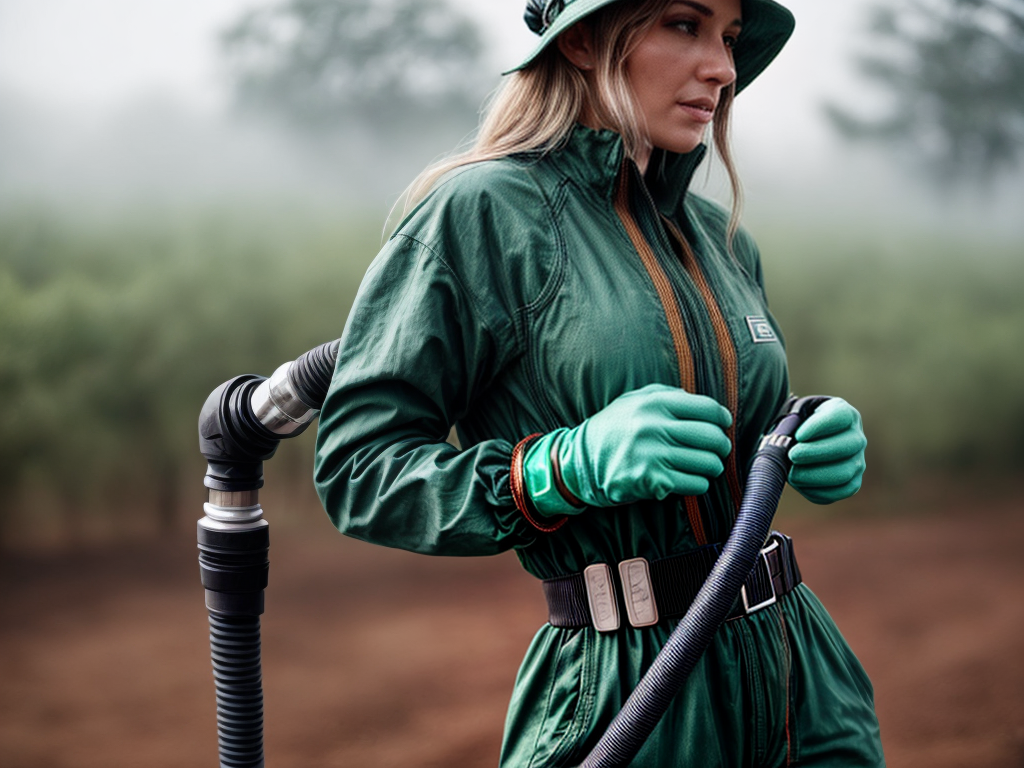
Did you know that almost 70% of hose fitting failures are due to improper maintenance and neglect? It’s a startling statistic that highlights the importance of taking care of your hose fittings to ensure they stay in top shape. But how exactly can you keep them in optimal condition? In this discussion, we will explore various strategies, techniques, and tips that will help you maintain your hose fittings effectively. From regular cleaning and proper installation to inspection and troubleshooting, we will cover it all. So, if you want to avoid costly repairs and ensure your hose fittings continue to function flawlessly, keep reading.
Importance of Regular Cleaning
Regular cleaning is essential for maintaining the optimal performance and longevity of hose fittings. Proper maintenance not only ensures that your fittings function efficiently but also prevents any damage that may occur due to dirt, debris, or corrosion buildup. By regularly cleaning your hose fittings, you can extend their lifespan and avoid costly repairs or replacements in the future.
To begin with, it is important to establish a regular maintenance schedule for your hose fittings. This involves inspecting them for any signs of wear or damage and cleaning them accordingly. A simple cleaning technique involves using a soft brush or cloth to remove any dirt or debris that may have accumulated on the fittings. It is crucial to avoid using abrasive materials or harsh chemicals, as these can cause damage to the fittings.
Additionally, it is recommended to clean your hose fittings after each use, especially if they have been exposed to chemicals or corrosive substances. This will prevent any residue from building up and causing potential damage to the fittings over time. In cases where the fittings are heavily soiled or clogged, you may need to disassemble them for a more thorough cleaning. This can be done by carefully following the manufacturer’s instructions and using appropriate tools.
Choosing the Right Hose Fittings
When it comes to choosing the right hose fittings, there are several important points to consider. First, it is crucial to select fittings made from materials that are compatible with the fluids and temperatures involved in the application. Additionally, proper sizing guidelines should be followed to ensure a secure and leak-free connection. Lastly, the use of sealants can play a vital role in preventing leaks and ensuring the longevity of the fittings.
Material Selection Tips
To ensure optimal performance, selecting the appropriate material for hose fittings is crucial. When it comes to material selection, stainless steel fittings offer numerous benefits. First and foremost, stainless steel is highly resistant to corrosion, making it ideal for use in various environments. It is also durable and can withstand high pressures and temperatures, ensuring long-lasting performance. Additionally, stainless steel fittings are easy to clean and maintain, reducing the risk of contamination. When selecting hose fittings, there are a few factors to consider. These include the type of fluid or gas being conveyed, the operating pressure and temperature, the compatibility with other materials in the system, and the specific application requirements. By carefully considering these factors, you can choose hose fittings that will provide reliable and efficient performance.
Proper Sizing Guidelines
After considering the material selection tips, the next important aspect to address is choosing the right hose fittings through proper sizing guidelines. When it comes to hose fittings, compatibility is key. Here are some guidelines to ensure a perfect fit:
-
Inner Diameter (ID) and Outer Diameter (OD) Matching:
-
Make sure the fitting’s inner diameter matches the hose’s outer diameter, and vice versa.
-
Ensure the fitting’s outer diameter matches the equipment’s inner diameter.
-
Thread Compatibility:
-
Check that the fitting’s thread type matches the equipment’s thread type.
-
Avoid cross-threading by ensuring a proper match.
Importance of Sealants
Using the right sealants is crucial when choosing hose fittings to ensure a proper and secure connection. Sealant application is an essential step in the installation process, as it helps prevent leaks and maintain the integrity of the fitting. When selecting a sealant, it is important to consider sealant compatibility with the materials used in the fittings. Different sealants are designed for specific applications and may not work well with certain materials. For example, a sealant suitable for metal fittings may not be compatible with plastic fittings. It is essential to choose a sealant that is compatible with the materials used in the fittings to ensure a reliable and long-lasting seal. Proper sealant application, combined with compatible materials, will help keep your hose fittings in top shape and avoid any potential leaks or issues.
Proper Installation Techniques
When it comes to proper installation techniques for hose fittings, there are a few important points to keep in mind. First, correct positioning is crucial to ensure the fitting aligns properly with the hose and other components. Second, it is essential to tighten the fittings securely to prevent leaks and ensure a reliable connection. By following these guidelines, you can ensure the proper installation of hose fittings and maintain their longevity and functionality.
Correct Positioning for Installation
To ensure proper installation techniques, it is crucial to position the hose fittings correctly. Here are some key points to consider:
-
Correct alignment:
-
Align the fittings with the hose and the equipment they are being attached to.
-
Ensure that the fittings are straight and not at an angle.
-
Proper orientation:
-
Make sure that the fittings are oriented in the right direction for the flow of fluid or air.
-
Check for any directional markings or arrows on the fittings to guide you.
Tightening Fittings Securely
I always ensure that hose fittings are tightened securely to guarantee proper installation techniques. Proper torque is crucial for maintaining the integrity of the fittings and preventing leaks. When tightening fittings, it is important to avoid overtightening, as this can damage the fittings or strip the threads. To achieve the proper torque, you can use a torque wrench or tighten the fittings by hand until they are snug and then give them an additional quarter turn. This ensures a secure connection without over-tightening. Remember to check for any leaks after tightening the fittings and make adjustments if necessary. By following these steps, you can ensure that your hose fittings are properly installed and will stay in top shape.
Inspection and Maintenance Tips
Regular inspection and maintenance of hose fittings is essential for ensuring optimal performance and preventing potential issues. Taking the time to inspect and maintain your hose fittings will not only prolong their lifespan but also contribute to hose fitting safety and overall efficiency. Here are some inspection and maintenance tips to keep your hose fittings in top shape:
-
Regular visual checks: Inspect your hose fittings for any signs of wear and tear, such as cracks, leaks, or corrosion. These common wear and tear signs can indicate potential problems that need immediate attention.
-
Tightness of fittings: Ensure that all fittings are securely tightened to prevent leaks. Use a torque wrench to tighten the fittings to the manufacturer’s specifications, avoiding over-tightening, which can cause damage.
-
Cleanliness: Keep your hose fittings clean and free from dirt, debris, and contaminants. Regularly clean the fittings with a mild detergent and water solution, and use a soft brush to remove any stubborn dirt.
-
Proper storage: When not in use, store your hose fittings in a clean and dry area to prevent rust and corrosion. Avoid storing them near chemicals or in extreme temperatures.
-
Regular lubrication: Apply a thin layer of lubricant to the threads of your hose fittings to reduce friction and make tightening easier. This will also help prevent the fittings from seizing or becoming difficult to remove.
Preventing Common Hose Fitting Issues
Inspecting and maintaining hose fittings is crucial for optimal performance and preventing potential issues, and now we will explore ways to prevent common hose fitting problems. Regular maintenance can help extend the lifespan of your hose fittings and ensure they stay in top shape. Here are some tips to keep them functioning smoothly:
| Problem | Cause | Prevention |
|---|---|---|
| Leaking fittings | Loose connections or worn-out seals | Tighten fittings properly and replace seals |
| Corrosion | Exposure to moisture or chemicals | Use corrosion-resistant fittings |
| Cracked fittings | Excessive pressure or aging fittings | Monitor pressure levels and replace aging fittings |
| Fittings coming loose | Inadequate tightening or vibration | Use proper torque when tightening fittings |
Regularly inspecting your hose fittings for signs of wear and tear is essential. Look for any leaks, cracks, or corrosion on the fittings and seals. If you notice any issues, address them promptly to prevent further damage. Tighten loose fittings properly and replace worn-out seals to ensure a secure connection.
To prevent corrosion, choose fittings made from corrosion-resistant materials like stainless steel or brass. These materials are less prone to rusting and can withstand exposure to moisture and chemicals.
Monitoring pressure levels is crucial to prevent cracked fittings. Excessive pressure can cause fittings to crack, leading to leaks or even burst hoses. Use pressure gauges to monitor the pressure and ensure it stays within the recommended range. Replace any aging fittings to minimize the risk of cracks.
Lastly, use proper torque when tightening fittings to prevent them from coming loose over time. Vibration can loosen fittings, causing leaks and compromising performance. Using a torque wrench can help ensure fittings are tightened to the manufacturer’s specifications.
Troubleshooting and Repair Solutions
To effectively troubleshoot and repair hose fittings, it is important to identify common issues and implement appropriate solutions. Here are some troubleshooting techniques and common repair solutions that can help you maintain your hose fittings in top shape:
- Leakage: If you notice water leaking from the hose fitting, check for loose connections or damaged seals. Tighten the connections or replace the seals if necessary.
- Corrosion: Corrosion can weaken hose fittings over time. To prevent and repair corrosion, regularly inspect the fittings for signs of rust or damage. If corrosion is present, clean the affected area with a wire brush and apply a rust-resistant coating.
- Cracked or Split Fittings: If you find cracks or splits in the hose fittings, it is crucial to replace them immediately. These damaged fittings can lead to leaks and further damage to the hose system.
- Thread Damage: If the threads on the hose fittings are damaged or stripped, it can cause leakage and prevent a secure connection. In such cases, it is necessary to replace the damaged fittings.
- Improper Assembly: If you have recently installed new hose fittings and are experiencing issues, double-check the assembly process. Ensure that all components are properly aligned and tightened according to the manufacturer’s instructions.


